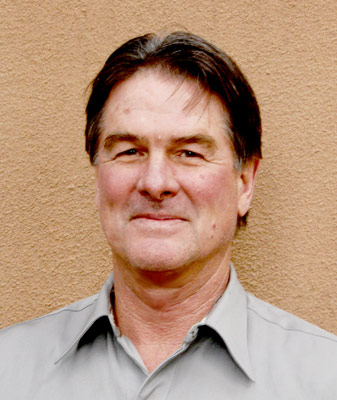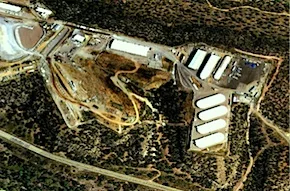The Oct 2013 Department of Energy Inspector General (DOE IG) audit report “The Resumption of Criticality Experiments Facility Operations at the Nevada National Security Site” informs us that a move from Technical Area 18 (TA-18) at Los Alamos to the Nevada National Security Site, like many other DOE projects, is taking longer than planned. The report didn’t mention it but it, but the move is, no doubt, costing us more, too.
The move centers on relocating four criticality assemblies. Criticality experiments use “assemblies” of enriched uranium and/or plutonium to create self-sustaining nuclear chain reactions. These assemblies differ from nuclear reactors in that the nuclear reaction is not sustained (assuming there are no accidents). Another significant difference is that the critical assemblies have no containment or shielding.
A DOE fact sheet tells us that:
[National Criticality Experiments Research Center] NCERC contains the largest collection of nuclear critical mass assembly machines in the western hemisphere. These assemblies can be broadly categorized as benchmark critical assemblies, general-purpose assemblies, and fast- burst assemblies that were designed to accommodate a broad range of experiments. Godiva is a bare metal uranium fast burst assembly designed to provide an intense burst of neutrons during an extremely short pulse. Flattop is a unique fast-spectrum assembly used for cross section testing and training. Planet and Comet are general purpose vertical assembly machines that are designed to accommodate experiments in which neutron multiplication is measured as a function of separation distance between experimental components. Fuel materials include uranium, plutonium, and neptunium.
Clearly, safety and careful planning would be of the utmost importance with these operations, which include conducting nuclear criticality experiments along with hands-on, criticality safety, and emergency response training.
The fact sheet gives the reason for the move as, “As a result of the extensive inventory of SNM and the resulting requirements for physical security and operational safety, it was decided to relocate…”
The DOE IG report also explains that criticality experiments at Los Alamos were halted and moved to Nevada “Citing safety and security concerns in 2004…”
But both of these accounts leave out some interesting history. A Project On Government Oversight (POGO) article gives an account of a security training exercise at TA-18 at Los Alamos –
In 1997, a special unit of the U.S. Army Special Forces was the adversary during a force-on-force exercise. The normal theft scenario is to “steal” enough SNM for a crude nuclear weapon that would fit in rucksacks. But, according to the Wall Street Journal, this exercise required that they “steal” more HEU than a person can carry. Not to be outmaneuvered, the Army Special Forces commandos went to Home Depot and bought a garden cart. They attacked TA-18, loaded the garden cart with nuclear materials, and left the facility. “[T]he invaders reached the simulated objective of the game: enough nuclear material to make an atom bomb.”
And they did so with relative ease. As the Wall Street Journal reported,
“The Garden Cart attackers. . .used snipers hidden in the hills to “kill” the first guards [protective forces] who arrived. Because they happened to be the commanders of the guard force, the rest of the force was thrown into disarray. Many of them also were “killed” as they arrived in small groups down a narrow road leading to TA-18. ‘[The Special Forces] took them out piecemeal as they came in,’ says one participant in the game, whose account wasn’t challenged by DOE or lab officials.”
As the Wall Street Journal further noted, “The 1997 mock invasion succeeded despite months of guard [protective forces] training and dozens of computerized battle simulations showing that newly beefed-up defenders of the facility would win.”
In April 2000, then DOE Secretary Bill Richardson ordered that TA-18 be shut down and all the nuclear materials be completely removed by 2004. So instead of completing the move the 2004, DOE and Los Alamos Lab had only started the move by 2004. Nuclear Watch NM voiced our concerns many times, including when we learned that a Federal Safety Board concluded fatal doses were possible if there was an accident.
As far as operational safety goes, neither the fact sheet nor the DOE IG Report mentioned that TA-18 was intentionally located at the bottom of Parajito Canyon so that the 200-foot canyon walls could provide some natural radiation shielding. This meant that TA-18, with its estimated three tons of highly enriched uranium and plutonium, sat in a flood plain.
The results of the DOE IG audit states that many of the former capabilities of the were restored in Nevada. However, several problems resulted in delays in restoring the full array of experimental capabilities. NNSA was unable to authorize operations until May 2011, approximately 1 year after the planned date. The program experienced further delays in the start-up activities of each criticality machine, with completion of all planned startup activities for one machine delayed about 2 years.
DOE has not been able to restore full capability to perform plutonium-based criticality experiments.
The Report results state that delays occurred because contractors had not developed adequate procedures for correcting concerns identified during the process to authorize the start-ups. Also, procured safety equipment did not meet standards. Additionally, the Report claimed that DOE had not ensured effective management of the multiple contractors involved and had struggled to successfully integrate and resolve issues between the multiple contractors. Which is odd, because there were only four contractors mentioned in the report – Los Alamos, Lawrence Livermore National Laboratory, National Security Technology, LLC, Wackenhut Services International. Exactly what Wackenhut (which provides security, fire rescue and aviation services) did for the move was not stated.
We do appreciate the focus on safety, but if these operations are so important, DOE must emphasize completing the job to avoid wasting any more taxpayers’ money. Once again the Department of Energy proves that its contractors cannot juggle safety, schedule, and cost without dropping as least two. And apparently DOE has trouble efficiently juggling contractors, which is too bad because contractors attempt to perform over 90% of DOE’s work.




